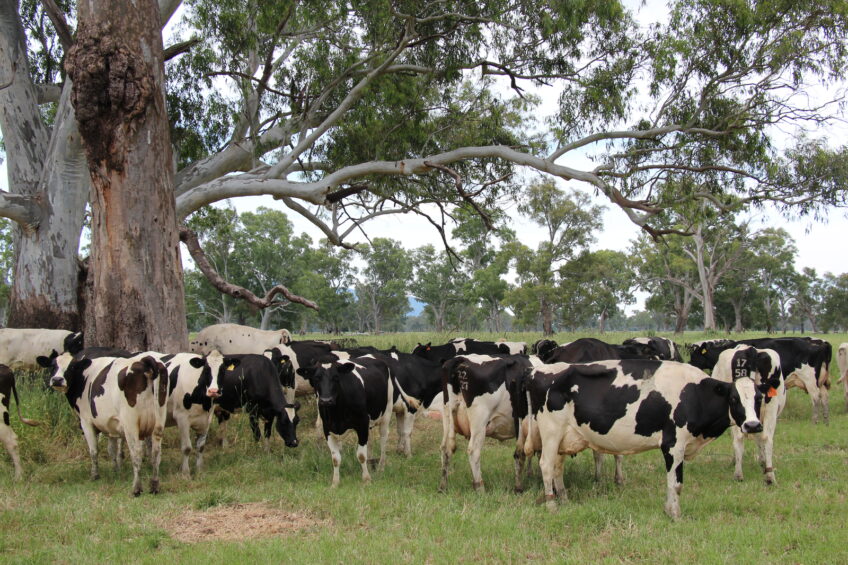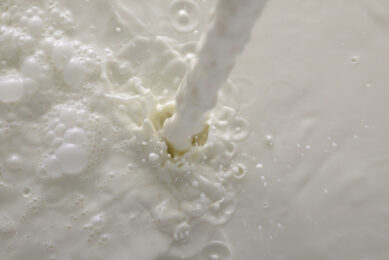Maximising profit from pasture management

The Glass family owns 500 Holstein cows producing 8,500 litres of milk primarily on pasture in Victoria, Australia. The aim is to improve the bottom line via optimal use of knowledge, ?science, genetics and pasture management.
Everything the Glass family does at their dairy is focused on profit. Their farm is part of The Focus Farm Project which is administrated by Murray Dairy, the regional Dairy industry Board in this part of Victoria. A ‘Focus Farm’ is not a ‘demonstration’ or ‘best practice’ farm.
It is an ordinary commercial dairy farm coping with the day to day challenges of the dairy industry. Over the next two years a support group of dairy farmers, the farm’s agronomist, vet, banker and accountant along with Department of Environment and Primary Industry (DEPI) staff, will meet every six weeks on the Glass farm with a clear purpose. They will assist the Glass family in achieving their stated personal and business objectives.

Profile Gundowring Farm
Pat (53) and Kerrie Glass, son and daughter Brendan and Sarah together with two employees farm on 597 hectares of land. About 269 hectares are owned, 328 leased. Their Holstein herd comprises of 500 milking cows with an average production of 8.500 kg milk / 600 kg MS, 160 rising yearlings, 150 joined rising two year olds, 75 steers and 20 mixed age bulls. They are located in the state of Victoria, Australia.
Given the varied backgrounds, philosophies and experiences of the support group members, discussion on which is the best way forward for the farm is vigorous at times, but the success of the focus farm concept lies in the group’s diversity. Not only is it hoped that the Glass family benefits from the support group but the group members themselves discover new ways of looking at things in sharing their professional or farming experiences.
The name of the farm is ‘Kerrick Park’, purchased in 2004 and covering 269 ha with an additional 328 ha. of leased land. According to the support group the farm performance is already in the top 20% from an economics perspective, so what can the support group do? First of all, the Glass family monitors the daily decision making process to identify why the farm is doing so well. In doing so, they review reproductive performances and review the breeding program. Secondly they explore alternative approaches to commercial fertilisers and monitor and make optimal use of the pastures.
Healthy and fertile Holstein cows
The foundation for profitable milk production is cows with good genetics. “Our ideal cow is medium sized with a production of high milk solids and structurally sound udders. Fertility and herd health are equally important so the cows breed back and get into the next lactation with ease and without mastitis. The cows must perform well in turning grass into milk solids because that’s how we get paid,” Brendan Glass says.

Poul Bech Sorensen
With seasonal calvings, good reproduction is extremely important. “Cows need to calve easily and in sync with nature to take advantage of the growth curve of the pastures. This results in many calvings in a relatively short period of time – so a live and vigorous calf that gets off the ground is a must. We breed cows 80 days after calving using prostaglandin injection after a week of natural heats for eight weeks then we turn bulls out for two or four weeks. Heifers are bred according to size and usually we start at the age of 14 months with a pregnacol program, heifers get three injections in total. Bulls are put out for eight weeks,” Brendan says.
In the recent years Brendan has been using sires from the Scandinavian based cooperative Viking Genetics. “In Scandinavia they have a unique indexing system and collect extensive data on very important traits like health, fertility, calving ease, hooves etc. The amazing thing is, that in Scandinavia they have collected this type of data for more than 30 years and included all economically important traits into a Total Merit index called NTM. This makes it easy to select the most profitable genetics for our dairy,” Brendan highlights.
All replacement heifers are retained to maintain the herd. The main culling reasons are fertility, mastitis and hooves, but the daughters of the Viking Holstein sires are already showing improvement for these important traits. Brendan hopes to have the added benefit of selling heifers in the future and prices are currently very lucrative for the live export market into China, South Korea and Japan due to recently established Free Trade Agreements. Sires used on the farm from Viking Genetics with cows in milk are Rakuuna, D Sol, D Odder and Onside and heifers are from D Sol, Bento and Miracle and this year we used Obama in the heifers.
Pasture management
Grasses are selected according to soil fertility and length of growing season. Early maturing ryegrasses are used for the hills, Italian ryegrasses on lower areas and perennial ryegrasses on river flats. Companion species are sown in an effort to improve growth rates and build a wedge of feed leading into winter. Forage brassica, oats and ryecorn are used to do this primarily. A pure stand of oats is often sown in autumn in one or two paddocks after being cultivated and fallowed through summer.

Poul Bech Sorensen
Where possible late maturing grasses are used to maintain feed quality later into spring. First paddocks to graze are the pure oats stands with the next grazing being the existing perennial pastures that were grazed through until mid-April and then top dressed up as needed after pre-seed spray. It is worth noting that the Glass family has an uncanny skill in being able to find time to prepare paddocks in advance to ensure good production. Paddocks are typically fertilised with Super and Potash in the autumn. Nitrogen is added later pending rain fall. Additional fertiliser containing nitrogen, potassium and sulphur may be added in late August.
Calvings follow grass production curve
Brendan calves once a year in the autumn which in Australia is from beginning of April until the end of June. He seeds ryegrass every year so it is in line with the calving pattern and the milk price which is higher from April to August. The grass production curve peaks in August, September and October, where they usually get two cuts for silage. The grass is cut and left to dry for about three days or when it reaches 30-40% dry matter. Silage is stored in pits dug into the ground. During years of high rain and resulting yields they may fill several pits and keep the silage for subsequent seasons with less rain. “I know farmers who have kept silage in such pits for a number of years,” Brendan tells.
The average rain fall is 850-900 mm in this part of Victoria and there is no irrigation on the Gundowring Farm. It can be a challenge during drought years, like the southern part of Australia experienced from 2000-2010. But in the last four years luckily they’ve been back to more normal patterns of rainfall. With cows on pasture all year round it is important to have good tracks without rocks that can injure the hooves. An excellent material for these tracks is the local crushed blue stone.
The milk price
The current break even milk price is AUD 5.20/kg milk solids (MS). These are net figures when all costs are subtracted like depreciation, feed, fuel, power, labour and interest. In the financial year of 2013/14 (July 1 – June 30) the milk price was high: AUD 7.47/kg MS and the forecasted price for 2014/15 is AUD 6.73/kg MS. “When comparing to the milk price in other major dairy countries, we are actually in a good situation,” Brendan says. “The milk is sold and processed by French owned Parmalat into fresh milk, yoghurt, sour cream etc. for the local market.”

Poul Bech Sorensen
The cows are milked in a 50 unit rotary twice a day and the milk is stored in a 15,000 liter tank in the dairy and picked up every day. An automatic cow ID system gives all relevant information on a screen installed beside the milker – monitoring date of calving, breeding, production, pedigree and mastitis.
Top 20% performance
The last nine years of performance by the Glass family has been in the top 20% in the Murray Dairy Group with excellent performance data in the last four years. They keep 1.5 cows per hectare and produce 600 kg milk solids (MS) per cow from 2.35 tonnes concentrate. Assuming an average milk price of AUD 5.80/kg MS and AUD 320/tonne concentrate. 2.35 T x AUD 320/T = AUD 725/cow concentrate cost to achieve production. AUD 725 – AUD 5.80 = 130 kg MS to pay the feed bill resulting in a net production of 470 kg MS/cow. The four year average ‘cost of production’ adds up to AUD 4.42 kg MS (Elite) and a four year average return on asset % (profit) is 15.5% (AUD 2.75/kg MS). The Glass family imports 30% of all feed and pasture consumption amounts to four tonnes of dry matter per cow and six tonnes dry matter per hectare. The current price for wheat is AUD 270 per tonne delivered on the farm, which is AUD 50 per tonne lower than the four years’ average. Grain is crushed on the farm and mixed with canola, lupine, minerals and vitamins.










